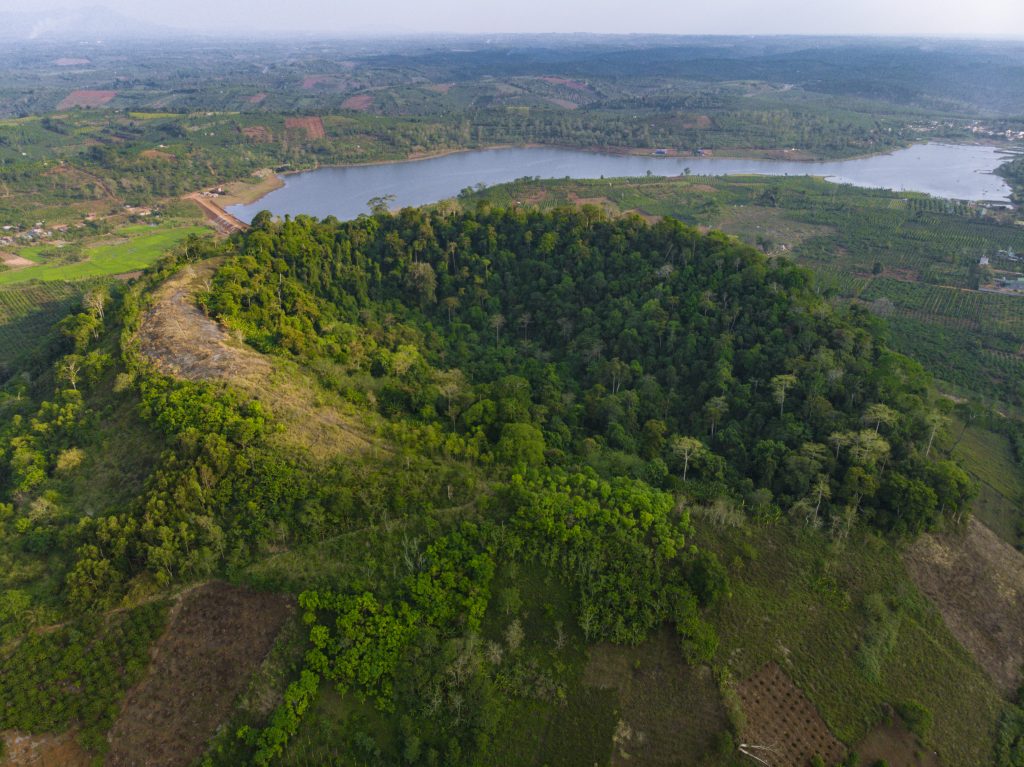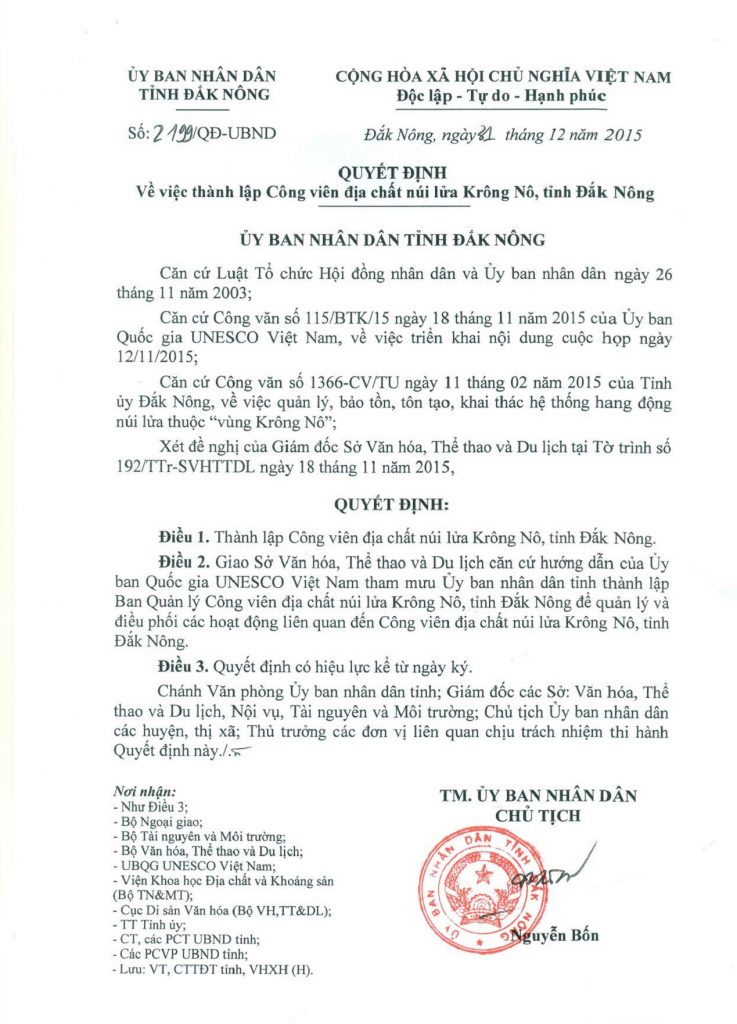Nam Gle volcano (meaning the mountain of bambusa trees, former named Thuan An volcano) is located at Thuan Hanh village, Thuan An commune, Dak Mil district, just beside National Road 14, on the red soil of the weathered basalt that formed a few million years ago. It is one of the young volcanoes in Dak Nong UNESCO Global Geopark, which is preserved almost intact, c.300m in dia., 80m in height, at the altitude of 867m. The volcano is slightly oval in shape, with the southwest flank being a bit steeper while the northeastern one forms two gentler steps. As volcanic products consist only of ash, scoria and bombs without yet evidence of lava flow, it is for now thought this volcano had only the explosive eruption phase.

There are some other evidences that help confirm the relatively young age of this volcano. For instance, at Dak Mol commune to the east of the volcano, there is a so-called “cold forest” c.10,000ha in area where temperature is always 3-4oC lower than outside. Though a part of 4,000ha of this forest was replaced by coffee plantation, temperature there is also c.2oC lower than outside.
Not far from this forest, there are plenty of CO2-rich mineral water springs which are extracted for beverage production by a local company. Before extraction was liciensed, these springs can result in fontanes 15m above the ground. Evaporation of CO2 from these springs is perhaps the reason of this lower this area’s temperature which is not unusual in volcanic areas worldwide. On the other hand, the springs themselves are an evidence of the active state of the area at present. Similar to other volcanoes in the Geopark, the formation of Nam Gle volcano is associated also with an interesting legend of the M’nong people, which is remembered and orally transmitted to younger generations via the Ot N’drong epic.



